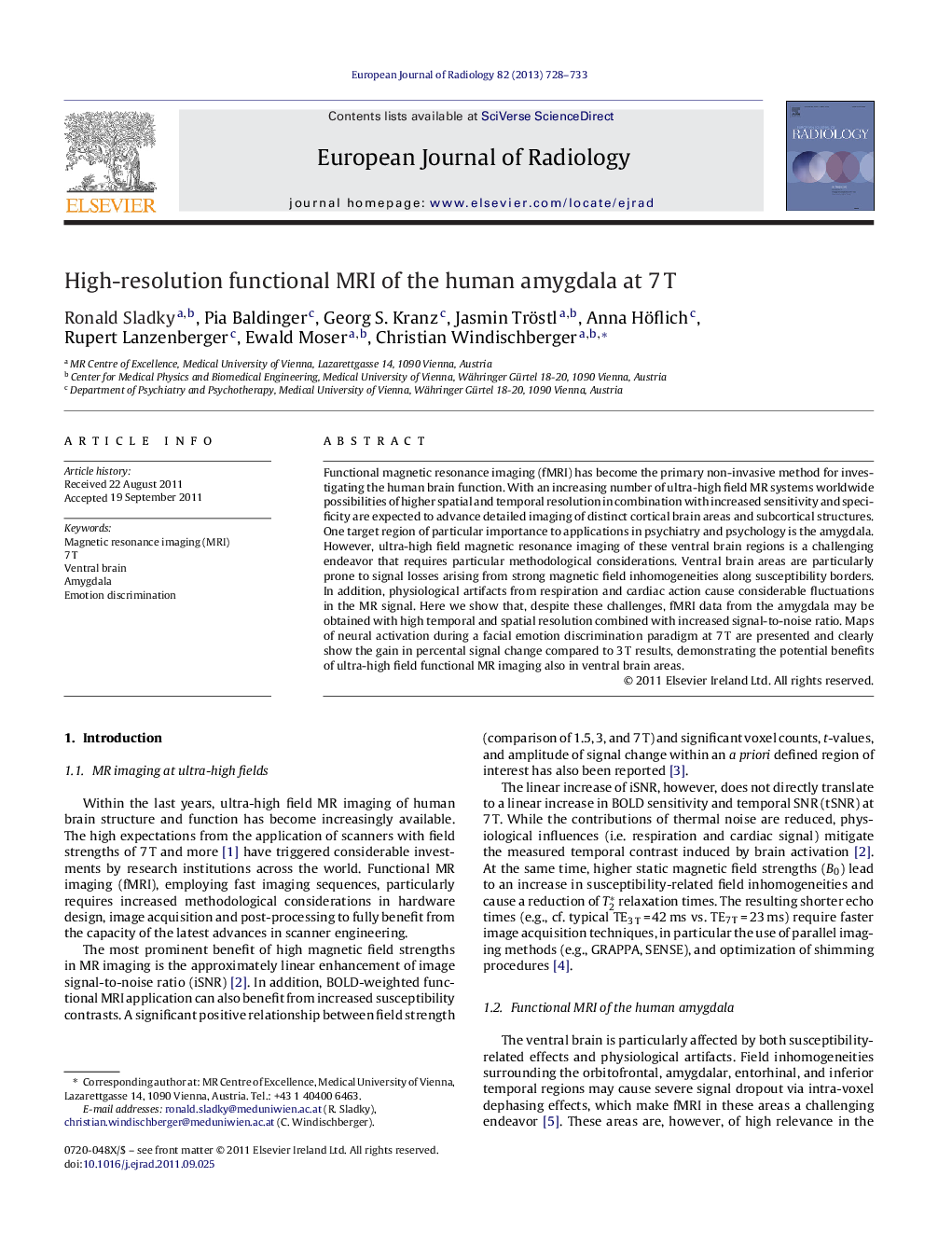| Article ID | Journal | Published Year | Pages | File Type |
|---|---|---|---|---|
| 6243582 | European Journal of Radiology | 2013 | 6 Pages |
Abstract
Functional magnetic resonance imaging (fMRI) has become the primary non-invasive method for investigating the human brain function. With an increasing number of ultra-high field MR systems worldwide possibilities of higher spatial and temporal resolution in combination with increased sensitivity and specificity are expected to advance detailed imaging of distinct cortical brain areas and subcortical structures. One target region of particular importance to applications in psychiatry and psychology is the amygdala. However, ultra-high field magnetic resonance imaging of these ventral brain regions is a challenging endeavor that requires particular methodological considerations. Ventral brain areas are particularly prone to signal losses arising from strong magnetic field inhomogeneities along susceptibility borders. In addition, physiological artifacts from respiration and cardiac action cause considerable fluctuations in the MR signal. Here we show that, despite these challenges, fMRI data from the amygdala may be obtained with high temporal and spatial resolution combined with increased signal-to-noise ratio. Maps of neural activation during a facial emotion discrimination paradigm at 7Â T are presented and clearly show the gain in percental signal change compared to 3Â T results, demonstrating the potential benefits of ultra-high field functional MR imaging also in ventral brain areas.
Related Topics
Health Sciences
Medicine and Dentistry
Radiology and Imaging
Authors
Ronald Sladky, Pia Baldinger, Georg S. Kranz, Jasmin Tröstl, Anna Höflich, Rupert Lanzenberger, Ewald Moser, Christian Windischberger,
